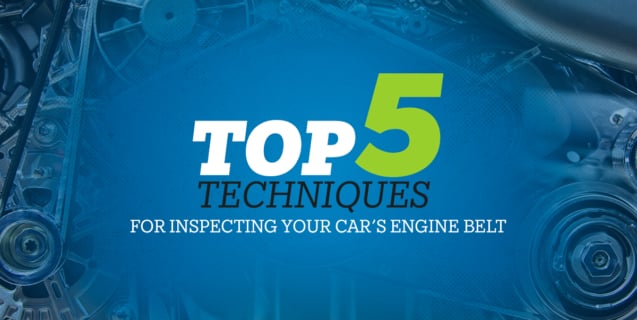Checking and maintaining your vehicle’s engine belts is crucial to the health of many internal mechanisms that rely on them. Being able to diagnose a worn or faulty engine belt early on can save you time and money in the long run. And who doesn’t like saving time and money? First, let me guide you through some basic steps for recognizing the signs of a troubled engine belt.
Know what you’re looking for.
For most people, detecting problems in your vehicle’s engine can be like trying to find a needle in a haystack. But don’t worry, with a few simple techniques, you’ll soon be able to recognize the signs that your belt may need replacing. First, you should familiarize yourself with what an engine belt is. The engine belt is in place to operate components such as the water pump, air pump, power steering pump, air conditioning compressor and alternator. There are two main types of belts; the serpentine belt and the v-ribbed belt. The serpentine belt is commonly the belt used in new model vehicles, while the v-ribbed belt (named for its v-like shape) is more common in older vehicles. The older vehicles tend to have two separate belts while the serpentine is one continuous loop.
Top 5 Techniques for inspecting your car’s engine belt:
- Examine the belt for any wear and tear. This includes cracks along the belt, frayed material around the edges of the belt, or splitting through the middle. (Over time, the belt will become thinner which results in it splitting down the middle.)
- Check the belt to make sure all its ribbed columns are present. If any ribs are missing this is a sign of belt failure.
- Survey the belt and lightly tug it to see if it’s loose. Your engine’s belts should never have more than about ½ inch of pull between the pulleys. Anything more than ½ inch may require a tension adjustment.
- Make sure the surface of the belt itself is free of any oil, coolant, or fluid of any kind. Anything that can make the belt slip around the pulley is detrimental to the vehicle and can result in issues from the vehicle overheating, to the internal A/C going out. Any squeaking noises you can hear from the engine can be signs of a contaminated belt.
- Sometimes your belt might not be your issue. Observe the pulley the belt rests on and be sure there is no debris or build up that could be harmful to the belt. And to be safe, check the alignment of the belt onto the pulley.
Without a properly functioning engine belt, your vehicle isn’t going to be much use to you anymore. The majority of new belts will last for quite some time without a problem if you take the time to perform regular inspections. But let’s face it, realistically, nothing lasts forever. A good rule of thumb is to replace your belt between 60,000-100,000 miles to ensure your engine continues to run like the well-oiled machine it is intended to be.
The field of Automotive Technology is constantly growing and is always looking for people to join the ride. Are you interested in exploring an exciting career in automotive technology? J-Tech Institute is helping students get the training and skills they need to become certified technicians. Contact us today to learn more about J-Tech’s Automotive Technology Program and how you can be a part of the team of specialists helping to mobilize the world. Call J-Tech now, we look forward to speaking with you!
